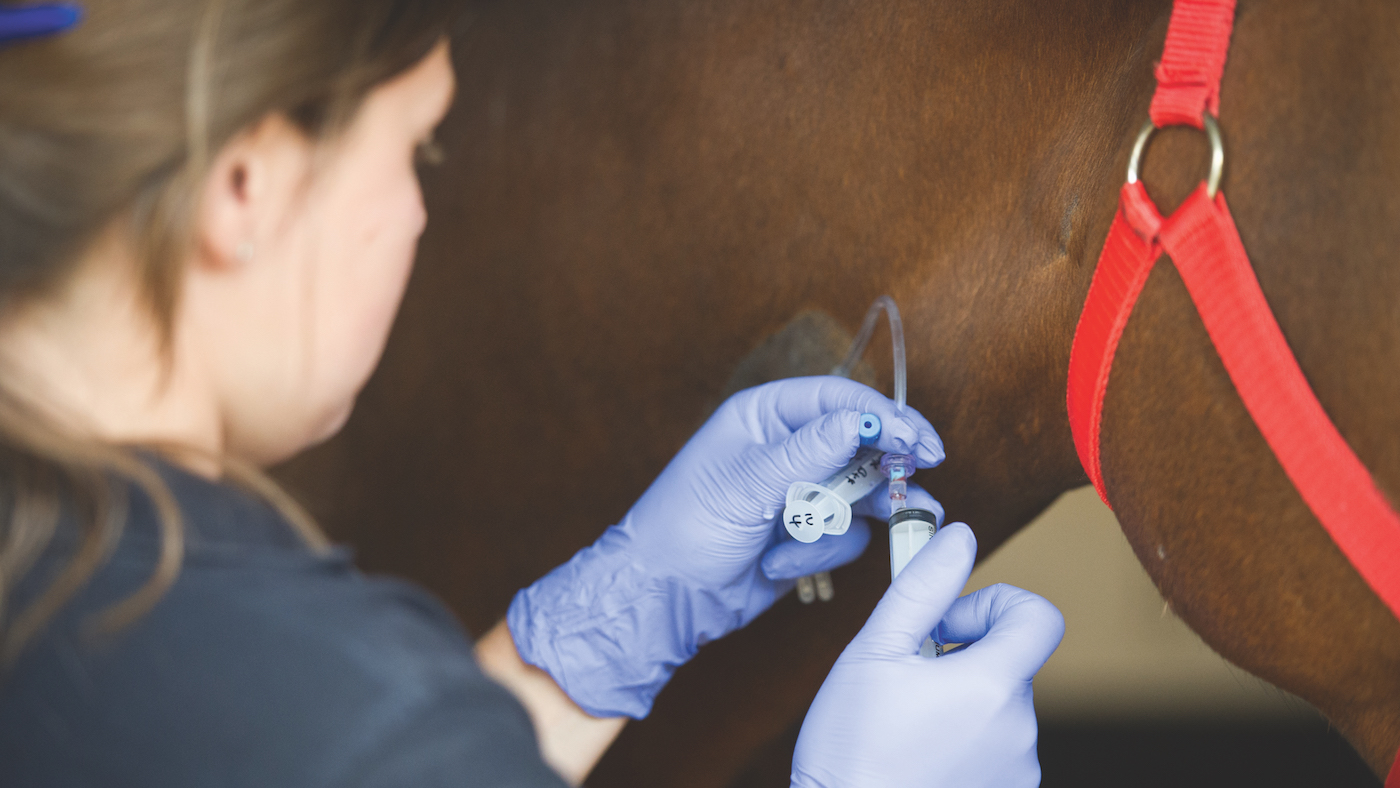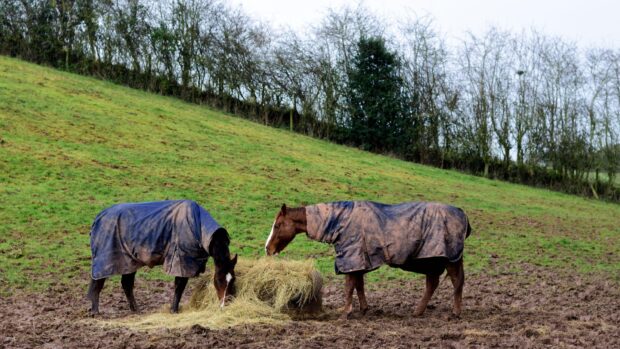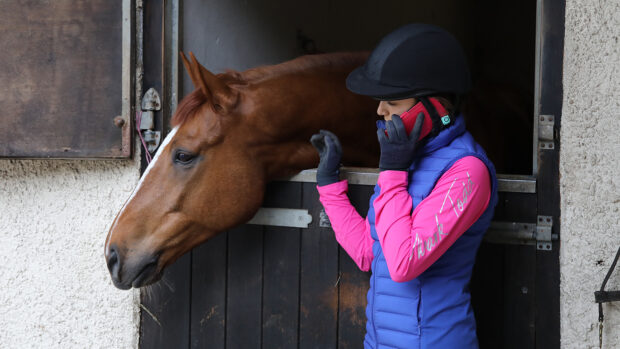An equine insurance policy provides financial support in a crisis, but it is essential to understand what any such policy really involves. Howard Newitt MRCVS, who advises insurers, explains what is fair and reasonable.
Equine insurance provides policyholders with reassurance and financial protection against mortality (death), theft, veterinary fees, loss of use and tack cover. But how sustainable is it, given ever-increasing costs of medical care?
As with any insurance policy, cover is provided by underwriters who assess the risk levels and set the premiums. The cover is then arranged by brokers who act as the intermediary between the policyholders and underwriters. Equine insurance is designed to provide cover for normal risks; in cases where an increased risk may be present, exclusions may be applied to reflect this.
Unfortunately, there are many misconceptions about equine insurance. Horse owners may debate whether or not insurance is a justifiable expense, sometimes citing examples where insurance claims were not paid. However, there are usually justifiable reasons for non-settlement of a disputed claim. Most such claims are due to misunderstandings concerning the level of cover taken out in the first place – unfortunately, we are all guilty of not reading the small print until problems arise, even though we really should do so.
One common area of misconception is when exclusions are applied based on a pre-purchase veterinary certificate when the horse was considered suitable for purchase. For example, a small sarcoid is noted on the certificate, which in the opinion of the examining vet is unlikely to affect the horse’s performance as an eventer. However, from an insurance viewpoint, there is an increased likelihood of this horse needing veterinary treatment for the sarcoid and an exclusion may be applied to represent this increased risk.
Equally, insurance will only cover problems that develop after the policy has been agreed. If, for example, the insured horse is reported to have flat feet with low heels on a pre-purchase vetting certificate, then insurers are extremely unlikely to agree to a claim for foot bruising and heel pain that develops as soon as the horse gallops on hard ground. Similarly, any pre-existing poor foot conformation and associated lameness will not be covered.
Karen Coumbe, vet at the Bell Equine vet clinic and veterinary correspondent for H&H would advise everyone to insure their horses “unless they can afford not to”, and she would strongly recommend everybody is insured against third party claims as well.
“If a horse strays on to a road and causes a crash there could be an enormous multi-million-pound claim,” says Karen. “While veterinary claims can easily run into thousands of pounds if surgery or expensive diagnostic work is required.
“At the equine hospital I work at, all horse owners have asked to settle their account before they can take their horse home, unless they have made some form of prior arrangement.
“We discuss the cost of treatments with clients when they come in and ask them if they have insurance for one reason — some insurance companies will not accept a claim unless they are notified in advance. Other than that, it is not relevant. We try to provide a daily update, on costs for our patients, where possible.”
Worst-case scenarios with equine insurance
Another area of confusion is the massive difference between permanent loss of use and mortality cover. All risks mortality (ARM) cover features within most policies and is designed for cases in which euthanasia is required because the horse is in severe pain and no treatment options are available: either an emergency situation such as a catastrophic fracture; or a non-emergency situation but one in which the horse is showing severe and unremitting pain, and retirement on a safe dose of medication is not possible. It will not cover the loss of a horse after prolonged treatment such as arthritis or other situations, in which the horse is no longer rideable but can be retired. Instead there is loss of use (LOU) cover available for this eventuality at the cost of an extra premium.

For a claim to be considered under an ARM policy, the horse must be judged to meet the British Equine Veterinary Association (BEVA) criteria for mortality insurance. This would usually involve a report from the attending vet and commonly a discussion between the insurer’s vet and the attending vet.
For this reason, it is important that insurers are given adequate notice of a planned euthanasia, although it is understood that emergencies can sadly happen. A post-mortem examination is usually required as part of a mortality claim.
Mortality insurance is cover that most horse owners will hope to never use, but it is worth being aware of the limitations of such cover at what is already a distressing time.
Multiple conditions
The detection of multiple veterinary conditions while investigating a problem is a further situation that can lead to misunderstandings regarding insurance cover. One such case might be that of a showjumper who had started to refuse at fences. Veterinary investigations revealed equine gastric ulceration syndrome, hock arthritis and back pain. From an insurance viewpoint, these three conditions would be considered as one claimable incident, as all three were detected as part of the investigation into failure to jump.
The relevance of this is that the policy’s veterinary fees limit is available to treat all the conditions detected; it is not the case that the limit is applied three times, once to each veterinary condition.

Limits for veterinary fee cover vary from policy to policy, and some of the lower limits may not cover all of the costs of the more expensive procedures. For example, policies are available with £3,000 of veterinary fees cover, but the costs of a surgical colic or extensive lameness investigation may greatly exceed that figure. Indeed, even cover up to £5,000 is often insufficient.
Sustaining the support
From a veterinary viewpoint, it is undoubtedly the case that veterinary fees insurance has allowed the development and provision of a high standard of veterinary care to the UK’s horses. This will have helped horse owners who may not otherwise have been able to afford treatment for their animals, and so has obvious benefits for equine welfare.
The flip side to this is that the improvement and development of veterinary treatments leads to more expensive claims, and certainly to claims inflation, which has resulted in veterinary fees insurance being a loss-maker for underwriters in recent years. Although perhaps not everyone feels sympathy for insurance companies, it is not sustainable for insurers to continue to make a financial loss. As a result, either premiums will rise, or fewer companies may offer veterinary fees insurance.
But what can be done to help the situation? The following may be of benefit:
There may be a case for co-insurance whereby the policyholder pays a percentage of the veterinary fees, which would reduce the policy premium.
Insurers may choose to deal only with certain practices (as is the case with some human health policies).
Insurers may choose to set price limits for certain procedures and medications.
Having experienced equine insurance as a horse owner, vet in practice and insurance company advisor, I am convinced of the many mutual benefits of such insurance, and look forward to horse owners, vets and insurers working together to ensure that equine insurance continues to provide significant benefits for the horses of Britain.
Types of equine insurance cover
Third party liability
This will cover the horse against claims resulting from injury to other persons or property. For example, if your horse breaks out of a field and causes a car crash then the owners of the car might sue you for damages. Such claims would be covered by a third party public liability policy. This level of insurance is considered absolutely essential. Some organisations, for example the British Horse Society, offer memberships that provide this cover and it may be available on some domestic policies, but it’s important to check if there are any limitations.
All risks mortality
Also known as accidental death cover, this kind of policy is more limited than many realise. It will only cover the horse against claims for the value of the animal in case of death by severe disease or accident. Policies vary, but in essence the horse is covered only if it is found dead or if it has to be humanely destroyed as an emergency due to an untreatable and incurable condition.
Veterinary fee
This cover will reimburse the owner for non-routine veterinary treatment following accident or illness to their horse. The amount of cover available for each incident will depend on the various policies, and is designed to provide cover for the unexpected costs of treatment following disease, accident or injury.
Current figures would suggest that it is prudent to insure your horse or pony for £5,000 per incident to cover major treatment (although there is no upward limit on potential cost, and even this figure may prove insufficient). Limited cover for only a few hundred pounds or even £1,000 to £2,000 will not, in the event of a more serious condition such as colic surgery, provide sufficient cover. Most insurers put an exclusion on any new policy for any condition after a year of claims.
So-called catastrophic vet fees
This is insurance against severe and potentially expensive vet fees, usually between £500 and £5,000. It has a considerably higher excess to pay, however it does lower your premium.
Loss of use
This cover provides you for reimbursement of your loss if your horse is permanently unable to perform its stated insured use following accident, illness or disease. It is important that you inform the company exactly what activities you will be doing with your horse.
A horse with a freezemark of a white “L” within a circle is an animal that has been the subject of a loss of use claim; the brand having been stipulated by the insurer so that it can be positively identified.

Fraud: not a victimless crime
As with all forms of insurance, fraud can occur with vet cover. Equine insurance fraud can range from submitting extra items on a claim (such as an extra box of bute on a lameness claim) through to incorrectly declaring the date of onset of a condition, or failing to declare prior treatment history. This might be using several different veterinary practices but submitting the history from only one practice (owners are now required to sign a declaration that they have submitted all of the horse’s treatment history to prevent this). Simply asking a vet not to mention conditions on a vetting certificate constitutes an attempt at insurance fraud.
To someone prepared to commit fraud, it may feel that there’s no downsides as “it’s just a company”, but aside from the obvious risk of personal legal and financial problems if the fraud is uncovered, the loss to insurance firms means higher premiums and less generous cover in the future, so it is far from being without consequence.
Insurers are not a bottomless pit to refund horse owners, so therefore it is vital horse owners use insurance properly – or the option to have insurance may be lost completely.
You might also be interested in:

7 things you really need to know about equine insurance

Equine insurance: choosing the right policy
Insuring your horse can be a confusing and time consuming process, so follow our top tips to choose the best

9 insurance blunders (and how to avoid them)

Subscribe to Horse & Hound magazine today – and enjoy unlimited website access all year round
Horse & Hound magazine, out every Thursday, is packed with all the latest news and reports, as well as interviews, specials, nostalgia, vet and training advice. Find how you can enjoy the magazine delivered to your door every week, plus options to upgrade your subscription to access our online service that brings you breaking news and reports as well as other benefits.




